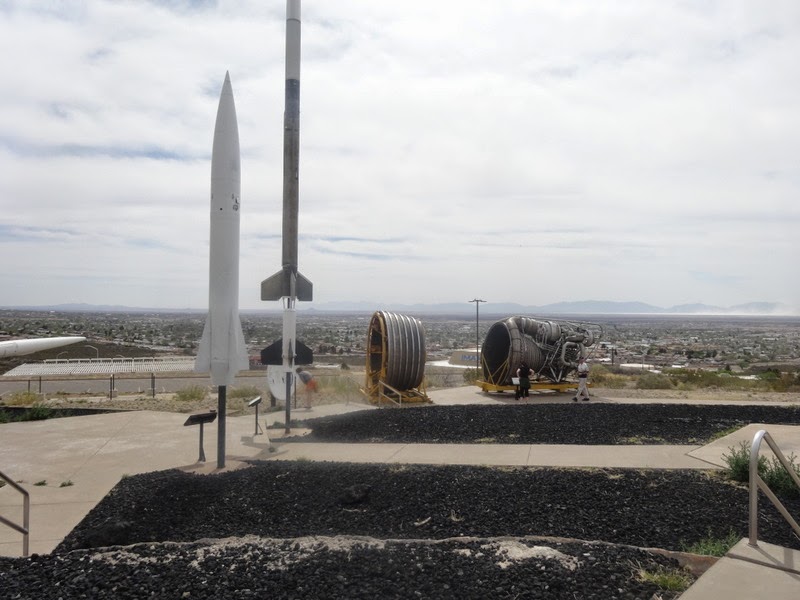Sunday, March 30, 2014....A rest day was in order, after six straight days of riding, totaling about 418 miles, had me dragging a bit. Also, Pam and I both had an interest in taking a closer look at the White Sands National Monument, so that's what we did, as well as checking out the New Mexico Space Museum. I never realized that New Mexico had such a role in early NASA, land speed records, and missile development, including the atom bomb, in the 1950's and 60's.
We went to the White Sands Monument first, because the afternoon was supposed to bring big winds, which would be blowing sand. The park was 275 square miles of the whitest Gypsum sand, I've ever seen or imagined. Gypsum is in all the mountains that surround this basin. All the water that runs into this huge area( drainage basin is the size of Connecticut), runs to a lake that totally evaporates and leaves the gypsum crystals on the dry lake bed. The prevailing southeast winds blow the crystals until they are fine granules. The granules and the wind combine to create the dunes, and the monument. Gypsum sand is very light and sparkly as compared to sand that we know, and to me, it looked exactly like snow. The eight mile road looped through a very small portion of the dunes, and it even looked like scraped, icy roads as we drove on them. People were everywhere with saucer sleds, riding down the dunes. I even tried it, thanks to a nice family who let me use their saucer. It didn't go to well, but little kids like it. Families were cooking out and picnicking in shelters at the pullouts, and the wind wasn't blowing yet, fortunately. After we left and went to the space museum, we could feel the high winds, and as we looked out over the valley we could see the white clouds of gypsum sand blowing high into the air.


















No comments:
Post a Comment